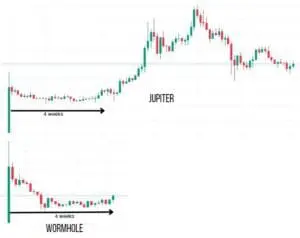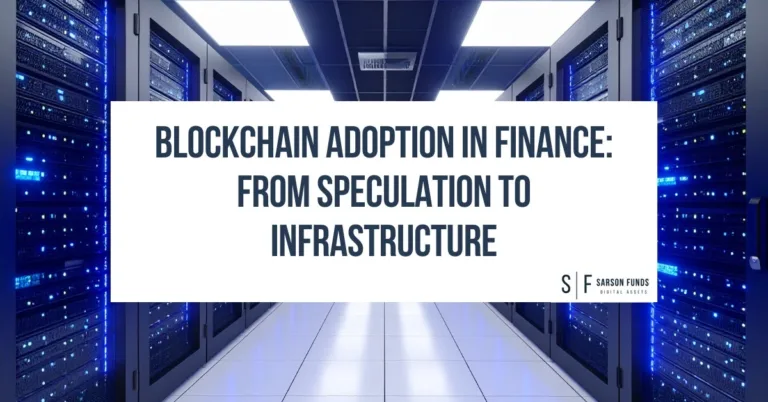
History doesn’t repeat itself, but sometimes it rhymes. Two tokens, Jupiter and Wormhole might be the next institutional infrastructure on Solana. Jupiter launched on January 31st, and Wormhole launched two months later on April 3rd. The investment team at Sarson Funds highlighted Jupiter’s appeal for institutional investors in our February 22nd blog post. We are observing similar price action and expect a similar demand trajectory for Wormhole. The migration of users from Ethereum to Solana remains a significant investment theme, and we anticipate that institutions will embrace Wormhole in a similar manner to how they adopted Jupiter. We believe this creates an attractive entry point for Wormhole.

As observable from the above charts, there is very comparable price action between both Jupiter and Wormhole’s post launch, and we believe there is a high likelihood of these tokens following similar paths of accumulation into possible appreciation following the release of governance and utility with Wormhole’s W token, similarly to how Jupiter’s JUP token released staking with the active staking rewards.
Jupiter’s JUP Token: An Overview
Jupiter launched their $JUP token earlier this year as a governance tool to facilitate the launch of new tokens in the Jupiter ecosystem through their active staking system. This has been a vital cornerstone in the launching of primary protocols in the Solana ecosystem and is considered core infrastructure in the Solana ecosystem.
Wormhole’s W Token: Parallel Paths
Similarly, Wormhole’s $W token has followed a different, yet comparable trajectory. Launched to enhance the governance of the Wormhole network, which acts as the primary bridge, facilitating asset transfers across multiple blockchains, W token initially mirrored JUP’s early market behavior. The token’s price dropped shortly after its release, driven by similar dynamics of airdrop recipients selling their allocations. Currently, the W token is thought to be in an accumulation zone, indicating that the market is possibly moving towards a stabilization of prices after the initial sell-off. This suggests that investors are beginning to hold the token in anticipation of long-term gains, recognizing its strategic role in cross-chain operations leading up to their release of staking for governance.
Disclosures: Not investment advice. The Author, Sarson Funds, Inc. and its affiliated managers may hold positions in the projects mentioned. Talk with your financial advisor before making any investment decisions or have them contact Sarson Funds directly at [email protected]









